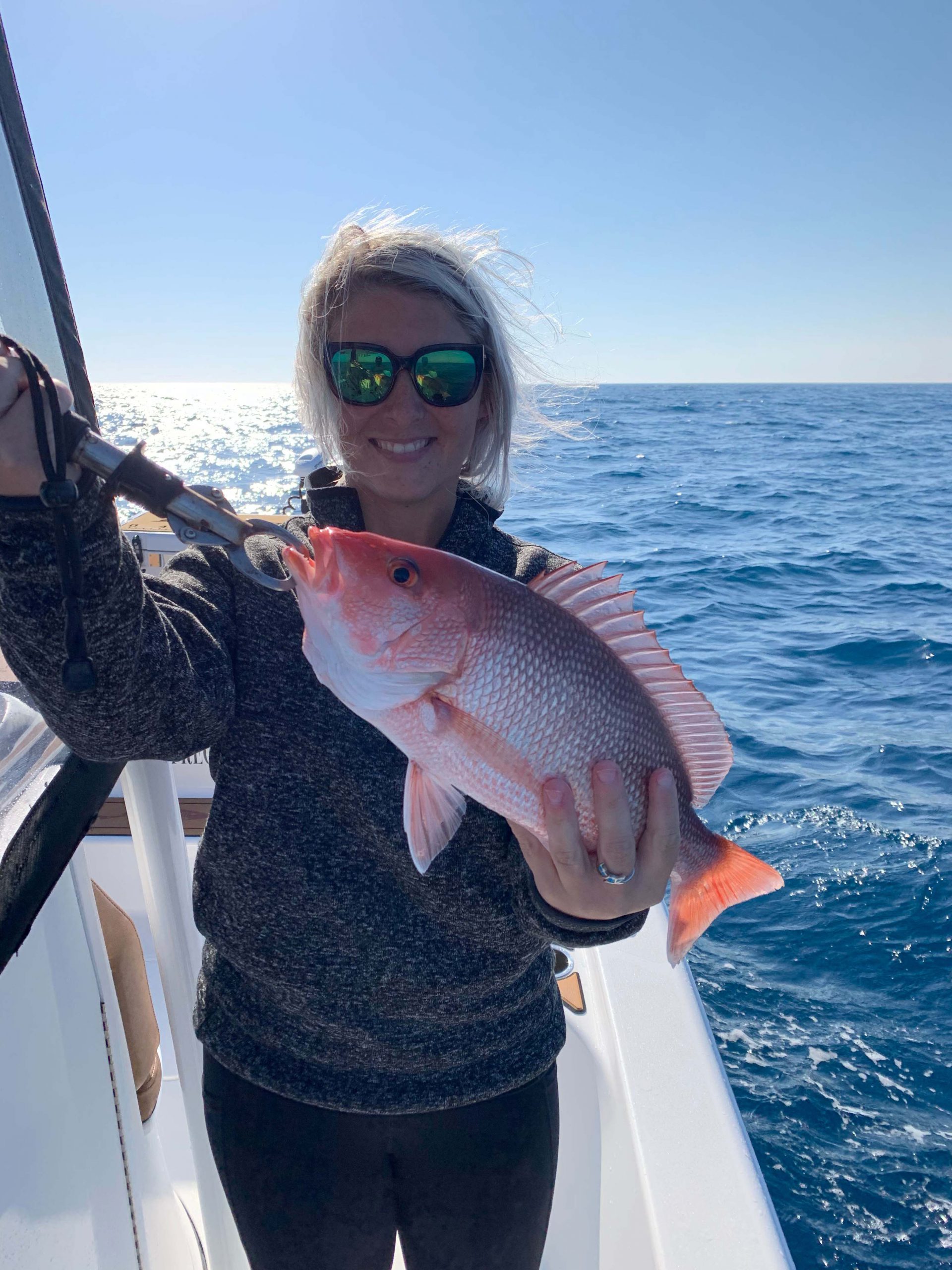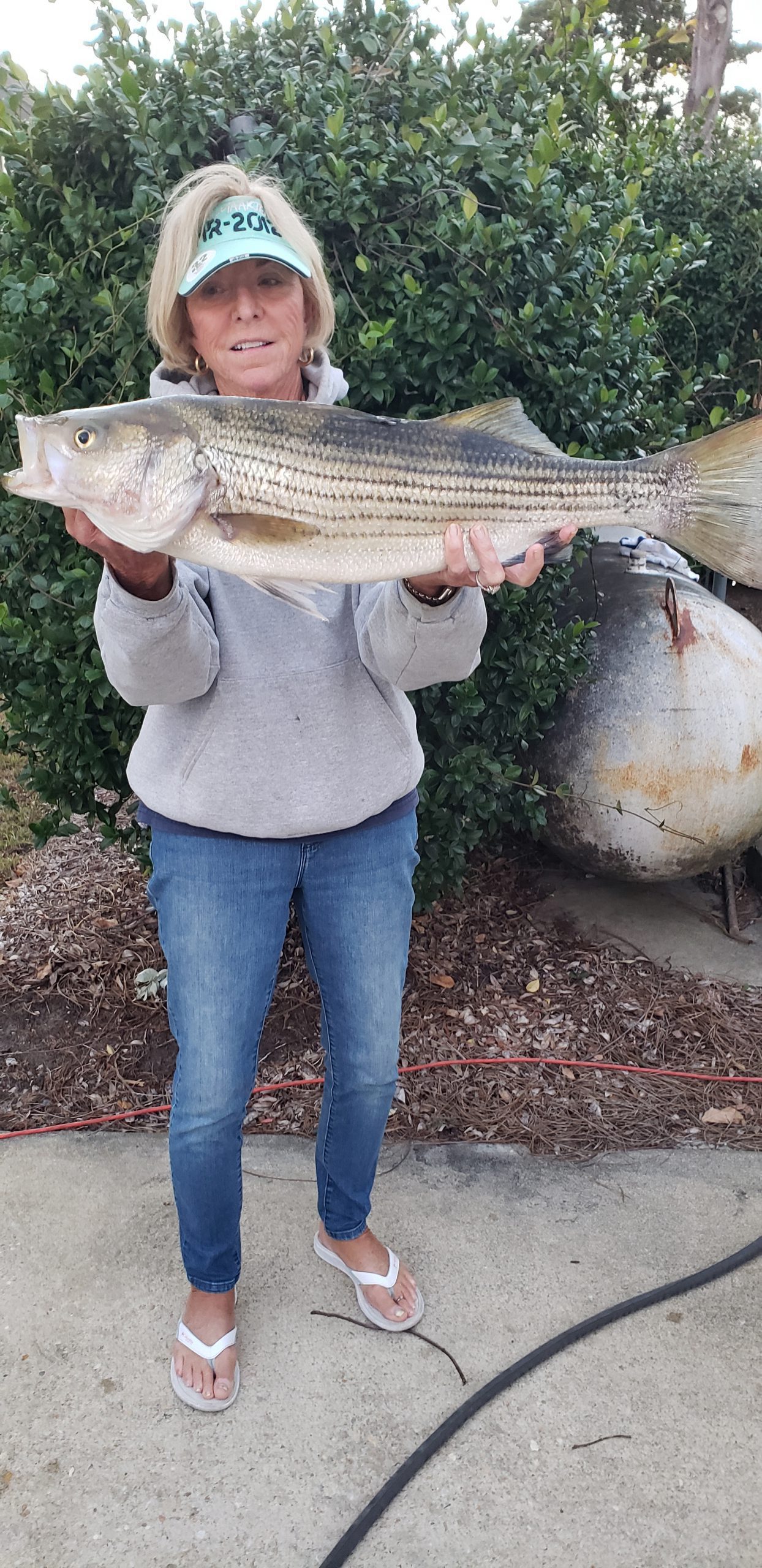North Myrtle Beach/Little River – March 2022
Patrick, of Captain Smiley Fishing Charters, reports that fishing patterns are still showing signs of winter. The continued cold inshore water temperatures comes with clear water, and this has at least made spotting fish easier.
There are plenty of red drum, speckled trout, and black drum staged up along the ICW as they start to more out of their wintering holes. Anglers have found that fishing some of the waters south of the area has seen water temperatures a bit higher and the bite not as lethargic. The local temperatures are rising, though, and any day now the bite will kick off.
Some striped bass are mixed in when anglers are fishing structure around the Little River swing bridge.
Signs of spring are already showing in the ocean. Sea mullet and croakers are starting to move into the surf, and nearshore anglers are catching plenty of black sea bass on local structure.
Structures both north or south of the inlet are also holding black drum and sheepshead, but not so much right outside the inlet for some reason.

Alex McMinn, of Myrtle Beach, caught this red snapper using a Vudu shrimp on a small ledge in 50′ of water. She was fishing offshore of Little River with Capt. Chris Ossmann of Fine Catch Fishing Charters.
Bob, of Strange Magic Fishing Charters, reports that inshore fishing has been hit or miss lately due to cold water temperatures.
A few speckled trout have been coaxed to strike Gulp and Z-Man soft plastics fished with a slow, straight retrieve or a slight jigging motion. The key is to pin these soft plastics to the lightest jig heads possible (1/16 oz. and 1/8 oz.) to keep baits in the strike zone longest, as the trout have been biting on the slow fall. This also helps keep the lure out of the snot grass that appears along the bottom this time of year.
Red drum are still around, and they’re feeding on live minnows, shrimp, or pieces of crab. Target the reds in the backs of creeks, up around docks, and on mud flats.
Black drum are staged up in these same inshore areas, and they’re feeding mostly on shrimp and crabs. The colder water has the drum lethargic, so be patient with setting the hook as the fish will first “mouth” the bait. Going into late March, anglers can also start fishing heavier bottom rigs out at the jetties.
Flounder will be moving back in soon from their offshore winter haunts. Look for water temperatures in the 60-65 degree range to be the magic number for finding flatfish. These first waves will be coming in ready to feed and falling for mud minnows and soft plastics.
A key to this early season fishery is to go out with a plan. Pay attention to the tide cycles, air and water temperatures, and weather conditions (including how much sun is out). The sunnier days and wind-protected areas will have higher water temperatures and, subsequently, many times holding more fish action.
Chris, of Fine Catch Fishing Charters, reports that nearshore structures (3-10 mile range) are holding some good numbers of sheepshead.
The smaller class of aggressive-feeding black sea bass are thick over these same structures.
Black drum are mixed in at the 40-60’ range, with anglers finding areas of smaller reliefs or ledges being the best target areas.
Artificial wrecks and the higher relief areas all seem bombarded with the black bass.
When fishing these bottom areas, it is key to use the lightest weight possible to hold bottom. This tactic keeps bite numbers up.
Redfish are back on the shallow flats and in the backwater creeks, and anglers should be looking to sight cast at these fish pushing wakes as they cruise the banks and flats while feeding.
Speckled trout have remained staged up in more brackish water areas away from the inlet, and they’re feeding on bait pushed up into the area. This 10-16” class of trout have been holding along edges of the ICW, especially those with a deeper channel nearby. Some anglers are also finding larger trout in the backs of mainland creeks and out around the inlet.
The early spring fishery will have anglers focused mostly on the speckled trout bite, as the trout action picks up significantly with water temperatures rising.
Red drum will mostly stay in their wintertime holding patterns, but they will feed better with more stable weather.
Larry, of Voyager Fishing Charters, reports that bottom fishing trips are going to be productive for anglers getting out over the next few weeks.
Nearshore structures will be holding large black sea bass and plenty of porgies.
Deeper waters will see the addition of vermilion snappers in large numbers, grunts, and some amberjacks.
Trips out to the break for trolling action are going to be catching blackfin tuna and wahoo.

Jane “Gus” Garrison Flatt, of North Myrtle Beach, caught this 30″ striped bass while trolling with Electric Chicken lures near the Little River Swing Bridge.
Bevan, of Chilly Water Fishing, reports that bottom fishing has remained good throughout these cold weather months for anglers looking to get out and enjoy the short weather windows.
Good-sized black sea bass have been staged over structures in the 70-90’+ range. Cut squid has worked just fine for these aggressive, non-picky eaters.
Working structures a little deeper (95’+) has been producing triggerfish and vermilion snapper in addition to the bass.
Ed, of Cherry Grove Pier, reports that bottom fishing action has been steady, with a mix of croakers, whiting, and scattered red drum being caught mostly on bait shrimp offerings.
Going into March, the croaker and whiting numbers should really push up, and bluefish could also arrive around the end of the month.
